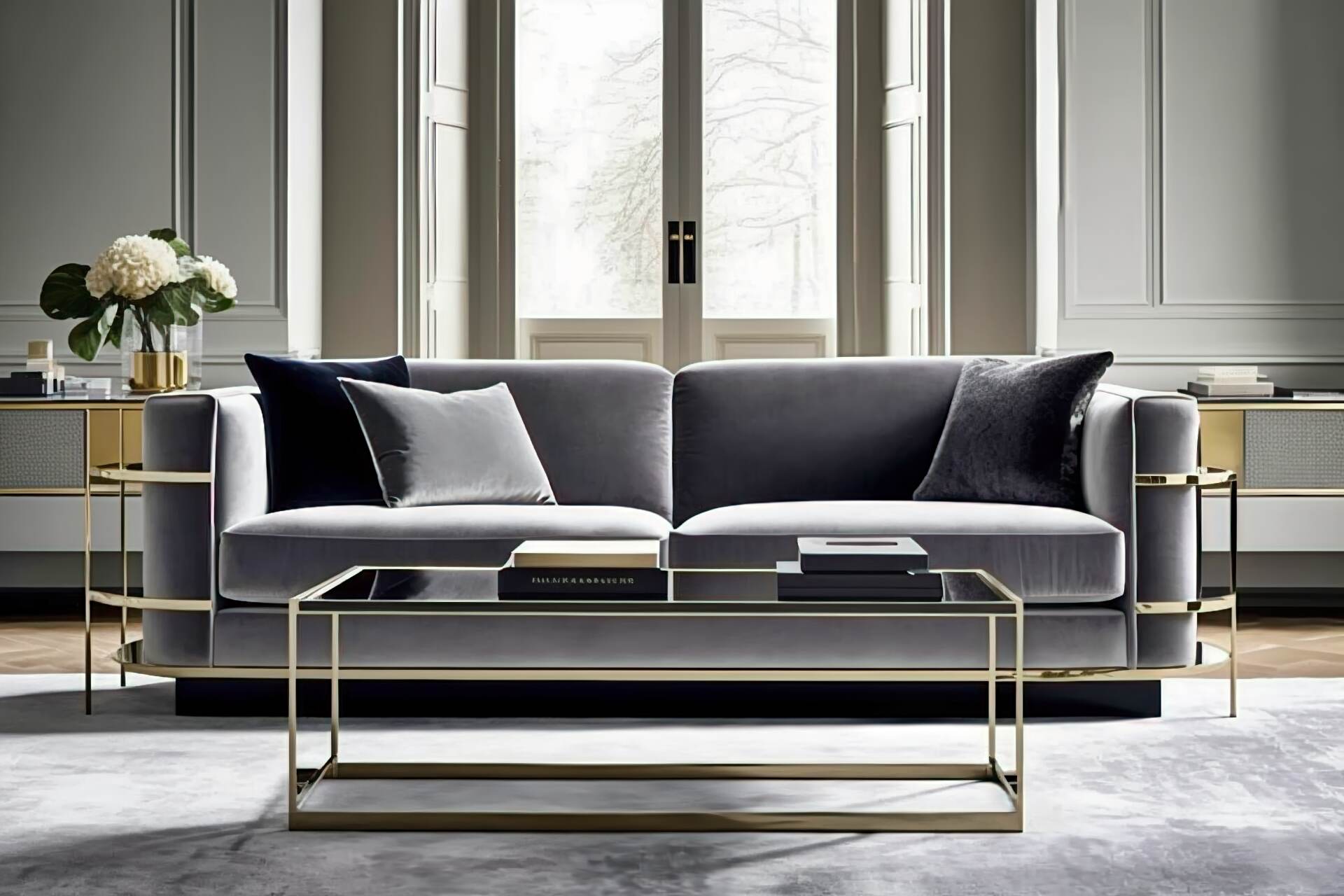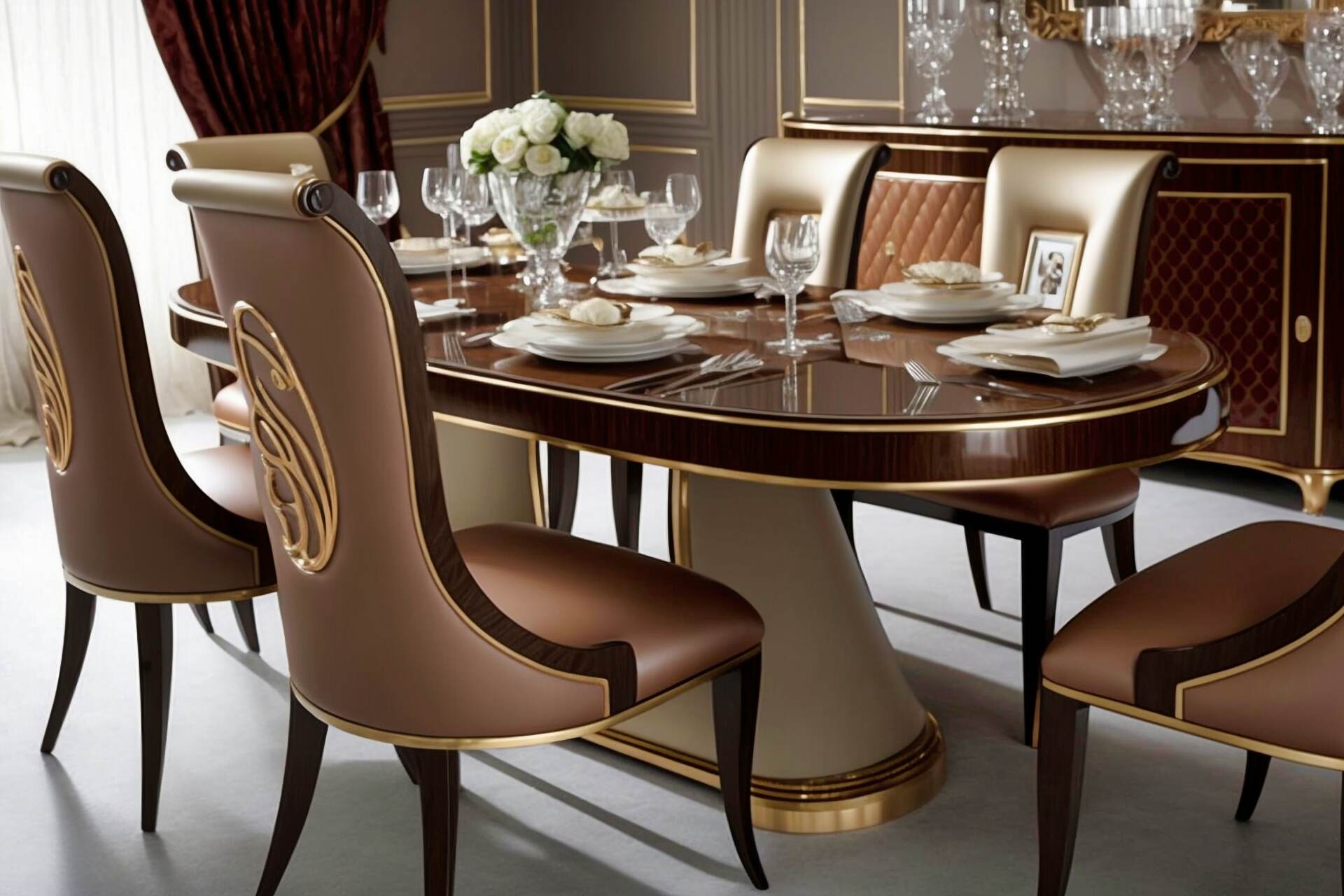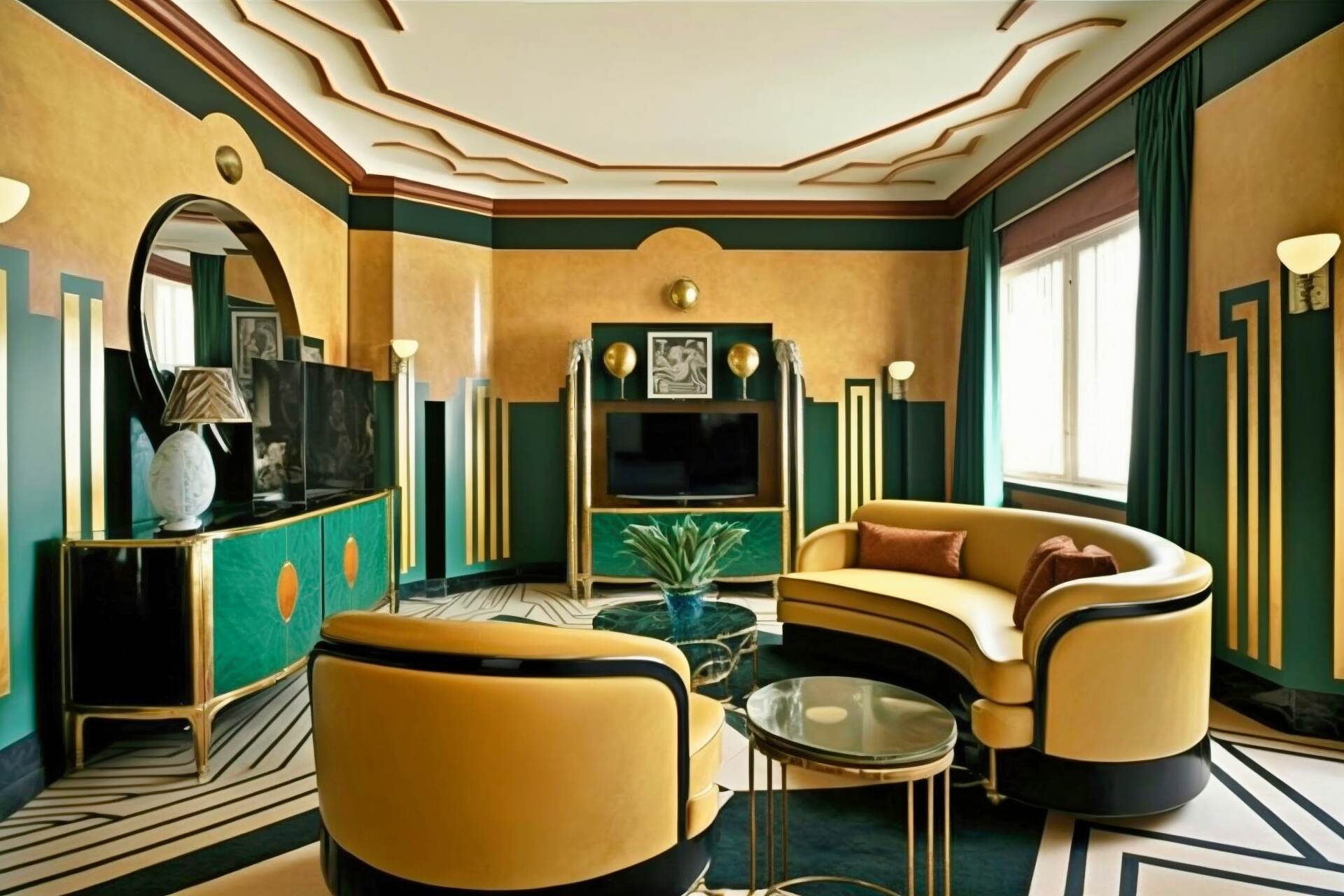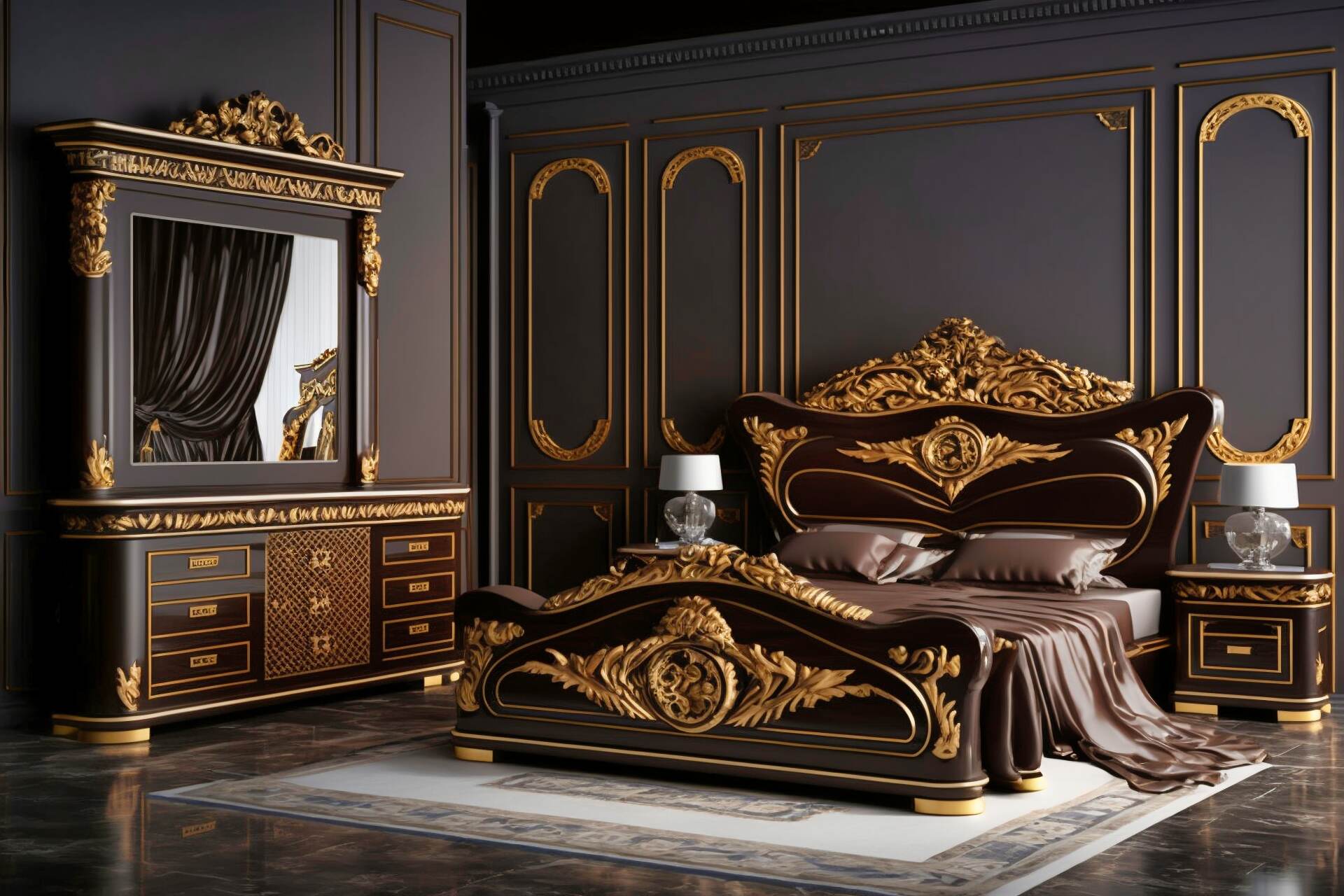The History of Italian Furniture Design and its Evolution
The illustrious chronicle of Italian furniture design stretches over many centuries, encompassing the masterful works of some of history’s most esteemed artists and artisans. From the hefty grandeur of 17th century baroque to today’s sleek contemporary designs, Italian furniture has been a major influence in dictating international ideas of beauty and sophistication. In this article, we will explore the past, present, and future of Italian furniture design and analyze the factors that influenced its development over time.
Brief Timeline
- 17th century – Sumptuous Baroque furniture reigns supreme, with its ornate detailing of elegant carvings, shimmering gold leafed accents, and luxurious fabrics.
- 18th century – Furniture featuring the iconic Rococo style is en vogue, characterized by graceful curves, delicate pastel shades, and intricate ornamentation. Notable contributors to this trend include G.B. Guerra and Giuseppe Maggiolini.
- 19th century – Art Nouveau burst onto the European art and design scene in the late 19th century, emphasizing natural forms and materials. Carlo Bugatti, an esteemed Italian designer, was a major proponent of this style. His works remain as part of the modern legacy of Art Nouveau.
- Early 20th century – The Art Deco movement in Italy was marked by its distinctive use of geometric form and opulent materials. Gio Ponti and Ico Parisi were two of its notable architects whose influence can still be seen today.
- Mid-20th century – The Italian Modernist movement surged forth, distinguished by its simple yet sophisticated forms and explorative application of materials. Noteworthy trailblazers like Joe Colombo and Ettore Sottsass exhibited exemplary creativity and innovation.
- Late 20th century – In Italy, Postmodernism has been exemplified through the varied and whimsical designs of trailblazers such as Alessandro Mendini and Gaetano Pesce. This movement is recognized for its divergent approach from traditional styles, making it a revolutionary aesthetic.
- 21st century – The Italian furniture design landscape continues to innovate and grow, with designers such as Vico Magistretti blending sustainable materials and modern technologies. Notable names like Alessi are making waves in the industry for their inventive pieces and meticulous attention to detail.

The ancestry of Italian furniture design can be traced back to the Renaissance – an epoch marked by immense technological and artistic growth. During this time, Italy was a leader in Europe and produced some of the world’s most renowned artists, architects, and craftsmen. Furniture design was no exception, giving us creations such as Antonio Stradivari and Andrea del Verrocchio’s masterpieces. This period also signified the commencement of baroque furniture which is characterized by lavish designs, intricate carvings, gilding accents, and the use of sumptuous materials like ebony and ivory.

As the years passed, Italian furniture design underwent a transformation, mirroring the fickle whims of those for whom it was made. The opulent baroque aesthetic gave way to the more refined and delicate rococo style in the 1700s and 1800s. This period highlighted lighter and more graceful designs with graceful use of pastel colors, gilding, delicate engravings, and intricate carvings.
The Impact of Art and Architecture on Furniture Design in Italy
Key Points
- Italian furniture design has been influenced by art and architecture throughout history.
- Renaissance era established high standards for craftsmanship through works of artists such as Leonardo da Vinci and Michelangelo.
- Baroque period marked by ornate detailing and carvings.
- Rococo era brought lighter, more delicate designs.
- 19th and 20th centuries saw transformation in Italian furniture design with Art Nouveau and modernist movements.
- Modernist movement defined by sleek lines, minimal forms, and innovative materials.
- Contemporary Italian furniture designers continue to blend traditional values with innovation.
- Key designers in the field include Gio Ponti, Ettore Sottsass, and Marco Zanuso.
Art and architecture have formed the basis of inspiration for Italian furniture designers over the centuries. From the Renaissance era to modern day, renowned artists and architects have created iconic works which have had a profound effect on the progress of Italian furniture design.
In the Renaissance period, visionary creatives such as Leonardo da Vinci and Michelangelo established a benchmark for craftsmanship which continues to be held in high regard today. Subsequent eras were likewise marked by developments in Italian furniture design, with baroque pieces being characterized by intricate detailing and ornate carvings reflective of the grandeur of that style, and the rococo period bringing about lighter and more delicate designs inspired by rococo architecture.
In the 19th and 20th centuries, Italian furniture design underwent a remarkable transformation, characterized by the emergence of the Art Nouveau movement, which embraced sinuous curves, natural motifs, and fresh materials as a reflection of modern technology.

Spanning the mid-20th century to present day, itaned furniture design has been heavily influenced by the modernist movement, distinguished by its use of sleek lines, minimal forms, and revolutionary materials such as steel, aluminum, and plastic. Some of the most influential designers in this field include Gio Ponti, Ettore Sottsass, and Marco Zanuso, who have all contributed to defining the look of contemporary Italian furniture.
As Italian furniture designers today stand firmly on the shoulders of their predecessors, they continue to blend traditional values with cutting-edge innovation in order to create truly inspiring pieces.
The Role of Regional Styles and Traditions in Shaping Italian Furniture Design
Key Points

Italy is imbued with a vibrant cultural history, particularly when it comes to furniture. Different regions throughout the country have their own special style and customs, mirrored in their local history, culture, and resources.
Venetian design can be especially noted in the north of Italy, owing to the Republic’s preeminent artistic and commercial legacy. Furniture designers at the time were inspired by the magnificence and gracefulness of Venice’s architecture and their works reflected this majesty in both look and function. This tradition lives on in today’s northern Italian pieces, where materials such as Venetian glass, intricately carved wood, and metalwork partially gilded are used to create furnishings that are not only pleasant to behold but also serve their purpose well.

Meanwhile, Tuscany is recognizable for its connection to the Renaissance period. Designers in the area drew influence from the era, crafting pieces that showcased elegance and finesse. Traditional elements like terra cotta and elaborately fashioned wood blended together to give Tuscan furniture its unmistakable features – features which still shines through in pieces made with these same materials today.
In the south of Italy, furniture makers embraced and built upon the traditional aesthetics of the Kingdom of the Two Sicilies. Here, designers constructed ornate, intricate pieces with inlaid wood, precious metals, and elaborate carvings – all specialties of this region’s unique style which is still present today.
All across Italy, the diverse regions boast their own distinct design personality while remaining true to their respective cultural histories and artistic heritages. This eclecticism is what makes Italian furniture genuinely remarkable and ensures that its legacy will endure for many more generations.
The Revival of Traditional Techniques and Materials in Contemporary Italian Furniture Design
Key Points
In recent years, the longstanding allure of Italian furniture design has been reignited and contemporary designers have been inspired to revive traditional production methods and materials. This resurgence is a testament to the considerable impact of Italy’s artistry and cultural heritage, resulting in uniquely crafted pieces, characterised by inlaid wood, gilded metalwork, and intricately carved details.
These craftsmen are now venturing into modern technology, producing sophisticated inlays that are meticulously completed by hand. Furthermore, the revival of gilded metalwork is accredited to ingenious techniques for a reliable, long-lasting finish. The showcasing of luxury and craftsmanship in Italian furniture design demonstrates an escalating admiration for the timeless beauty and sophistication of its traditional designs.
The saga of Italian furniture design is extraordinary and profound, spanning multiple eras of rapidly shifting trends and technology. From the lavish extravagance of the 17th century to today’s modern designs, Italian furniture has been instrumental in shaping how people worldwide perceive beauty and refinement.

Contemporary Italian designers have rediscovered time-honored approaches such as carving, inlaying and gilding, utilizing them in inventive ways that are both practical and aesthetically pleasing. Their dedication to upholding the cultural legacy of their nation stands testament to their skill and savoir-faire.
Technology is embraced by Italian furniture makers, who are nevertheless faithful to the principles which have always characterised their work, including craftsmanship, quality, and intricacy. Combining classic techniques with modern materials, these talented individuals push the boundaries of contemporary design to carve a lasting impression on the public’s understanding of style and grace.
The Influence of Fashion and Luxury Goods on Italian Furniture Design
Key Points
Recognized for its fashionable and opulent commodities, Italy’s furniture design has been significantly influenced by the country’s celebrated position in the fashion industry. With a robust emphasis on quality, craftsmanship, and minute detail, Italian furniture designers are constantly inspired by the latest trends of fashion and demonstrate this inspiration in their unique designs.
Luxurious materials such as velvet, leather, and silk are commonly incorporated in order to yield furniture pieces that are aesthetically pleasing yet functional. Furthermore, intense colors and vivid patterns have been used to create distinguished and memorable pieces.

Moreover, the luxury goods industry has had an immense influence on Italian furniture design; artisans have long been inspired by the precision and perfection found in luxury items including accessories, jewelry, and watches. This inspiration has driven the production of high-end furniture that is simultaneously practical and beautiful, constructed from the most excellent materials and completed to the utmost standards.
Through the incorporation of modern fashion trends and luxurious materials, Italian furniture design has developed an unmistakable style unrivaled by any other in the world. Exhibiting a range of aesthetics – be it classical elegance or vibrant statement pieces – Italian designers have successfully combined classic craftsmanship and cutting-edge flair to create furniture that is both stylish and practical. As a result, their work continues to captivate and impress.
The Impact of Italy’s Historical, Cultural, and Political Events on the Development of its Furniture Design Industry
Key Points
Italy’s expansive cultural background, combined with its volatile political past, has had an immense influence on the progress of its furniture design sector. From the days of the Renaissance up until the modern era, Italy’s historical, cultural, and political occurrences have determined the nation’s aesthetic sensibilities and motivated its designers to create pieces of furniture that are both exquisite and efficient.
A monumental epoch in Italian furniture design was the Renaissance, when Italy matured a cultural and intellectual revival impacting all facets of their culture. In this time period, Italian designers tapped into the art and architecture of the moment, resulting in designs that were simultaneously attractive and practical.

Another crucial period in the advancement of Italian furniture design was the emergence of Art Deco during the initial part of the twentieth century. Symbolically, Italian furniture makers embraced Art Deco’s geometric shapes and striking colors in order to fabricate creations that were contemporaneous yet elegant.
Drawing on its deep-rooted traditions and long-standing tumultuous political history, Italy has firmly established itself as one of the world’s foremost experts in furniture design. From the Renaissance to modern times, Italian designers have been driven by the nation’s fascinating culture, producing pieces that offer both aesthetic beauty and practical functionality.
No matter what style you are seeking, it is certain that the Italian design legacy will continue to inspire furniture creators for generations to come.
The Significance of Italian Furniture Design in the Global Luxury Market and its Importance as a Cultural Export
Key Points

Italian furniture design has gained renown for its luxuriousness and sophistication, making it one of the foremost contenders in the international luxury market. Substantial craftsmanship, meticulous attention to detail, as well as utilization of superior materials, have all contributed to the desirability of Italian furniture worldwide.
Over the years, Italy’s furniture designers have forged connections with renowned fashion, accessory and home décor companies, producing excellent pieces that are both attractive and practical. As such, Italy has earned a strong reputation as an epicenter of ingenuity and invention, esteemed both within and beyond its borders.
Apart from its fame as a prize luxury item, Italian furniture design also represents a major cultural export. Italian furniture artisans are acclaimed for their skillful integration of old-fashioned techniques and materials with modern design trends, creating brands of furniture which are widely recognizable and widely admired around the world.
The cultural significance of Italian furniture design is globally acknowledged, prompting numerous initiatives which have allowed for its promotion and preservation both at home and abroad. Italy’s design heritage continues to be safeguarded for future generations to appreciate, thanks to these efforts.
It can be said with certainty that Italian furniture is nothing short of a luxurious symbol of sophistication and quality, owing to its finesse in craftsmanship, meticulous attention to detail, and use of the finest materials available on the market.
For those keen on investing in a cultural icon, or simply hoping to add an iconic statement piece to their living space, Italian furniture design is the answer.




